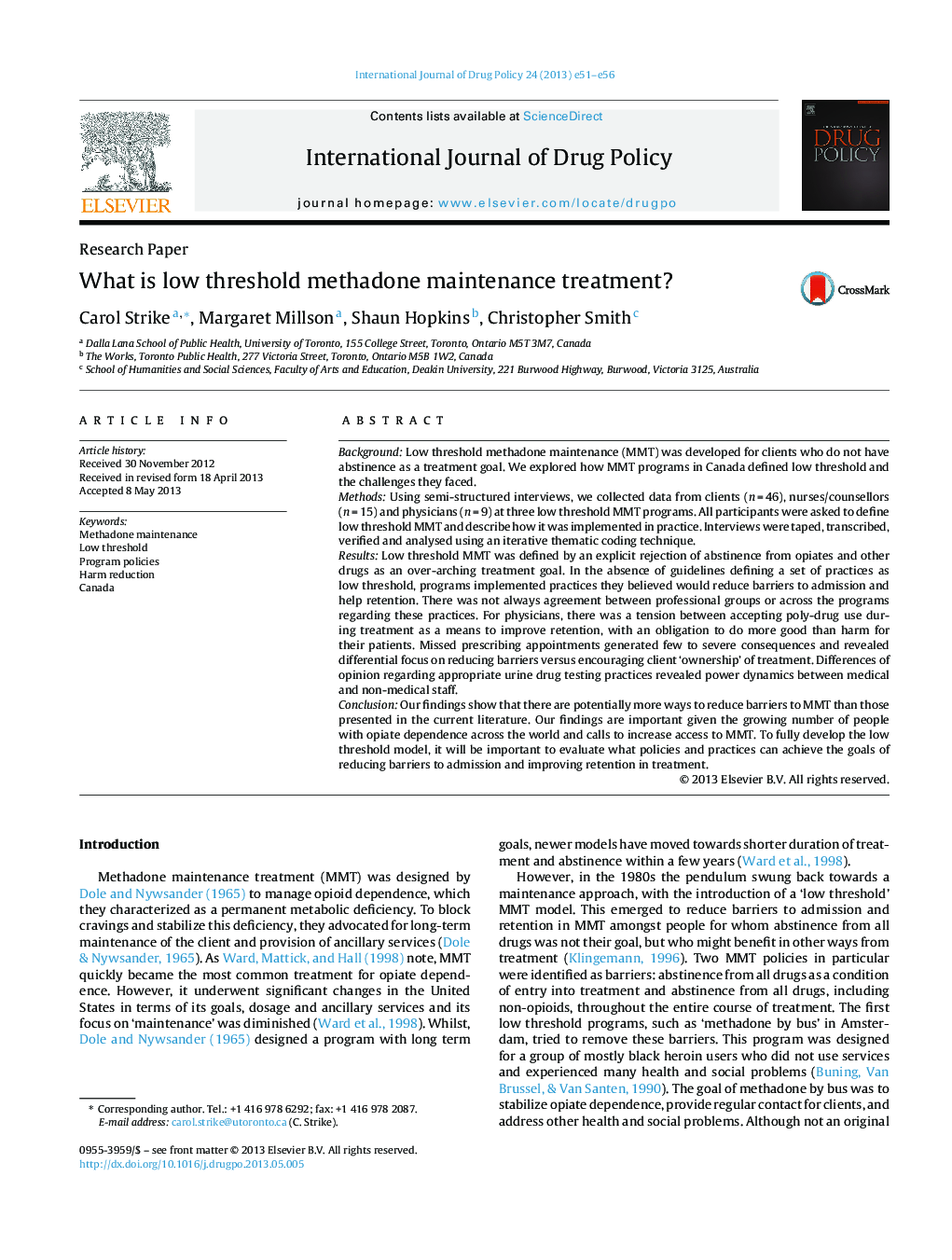| Article ID | Journal | Published Year | Pages | File Type |
|---|---|---|---|---|
| 1075688 | International Journal of Drug Policy | 2013 | 6 Pages |
BackgroundLow threshold methadone maintenance (MMT) was developed for clients who do not have abstinence as a treatment goal. We explored how MMT programs in Canada defined low threshold and the challenges they faced.MethodsUsing semi-structured interviews, we collected data from clients (n = 46), nurses/counsellors (n = 15) and physicians (n = 9) at three low threshold MMT programs. All participants were asked to define low threshold MMT and describe how it was implemented in practice. Interviews were taped, transcribed, verified and analysed using an iterative thematic coding technique.ResultsLow threshold MMT was defined by an explicit rejection of abstinence from opiates and other drugs as an over-arching treatment goal. In the absence of guidelines defining a set of practices as low threshold, programs implemented practices they believed would reduce barriers to admission and help retention. There was not always agreement between professional groups or across the programs regarding these practices. For physicians, there was a tension between accepting poly-drug use during treatment as a means to improve retention, with an obligation to do more good than harm for their patients. Missed prescribing appointments generated few to severe consequences and revealed differential focus on reducing barriers versus encouraging client ‘ownership’ of treatment. Differences of opinion regarding appropriate urine drug testing practices revealed power dynamics between medical and non-medical staff.ConclusionOur findings show that there are potentially more ways to reduce barriers to MMT than those presented in the current literature. Our findings are important given the growing number of people with opiate dependence across the world and calls to increase access to MMT. To fully develop the low threshold model, it will be important to evaluate what policies and practices can achieve the goals of reducing barriers to admission and improving retention in treatment.
